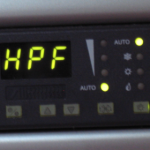You and your lady are meant to take a cruise across the Sound for a well-deserved,  overdue getaway weekend. You’ve spent the last two days geting the boat wife-ready and now, after an unanticipated delay at the office, you are on your way to the marina. Your wife is already there by now so you give her a call to let her know you are on the way.
overdue getaway weekend. You’ve spent the last two days geting the boat wife-ready and now, after an unanticipated delay at the office, you are on your way to the marina. Your wife is already there by now so you give her a call to let her know you are on the way.
“I’m hot,” you happily hear her say. “I know you are, baby and I can’t wait to shove off,” you cheerily reply. “No, I’m hot. As in the air conditioning on your damn boat isn’t working and I’m not going anywhere.”
Thinking quickly, you pull into the nearest florist and grab whatever bouquet is readily available. You then high-tail it to the marina so you can get this situation sorted. Upon arrival, a quick visual inspection verifies what you feared: your wife is hot. “I think that stifling air below has re-awakened that smell from last summer,” she says as things are going from bad to worse. You hand your wife the bouquet, which gets you half a smile and you pour her a weak gin and tonic (no need to fuel this fire), eliciting another quarter smile. “I’ll get this fixed” you confidentially offer up as you head below to see what’s what.
Armed with your smartphone and a super-human drive to get the Boat AC working, you make a cursory examination of the air conditioning controls and discover the dreaded HPF code – a High Pressure Fault. For the uninitiated, a high pressure fault typically indicates a prob lem with water flow. Your Google search tells you to check and make sure water is flowing out of the system. Easy, peasy, right? You turn the system on, head topsides, and immediately lose the additional quarter of a smile by instinctively patting your wife on the head as you go forward to inspect the cooling water exit.
lem with water flow. Your Google search tells you to check and make sure water is flowing out of the system. Easy, peasy, right? You turn the system on, head topsides, and immediately lose the additional quarter of a smile by instinctively patting your wife on the head as you go forward to inspect the cooling water exit.
As you move forward, you hear the trickle indicating water is flowing out, and a visual inspection validates this. However, rate of flow could be the issue so research the proper flow-rate for your unit (the average is about 3.5 gallons per minute) and then use a measured container and stopwatch or watch sweep hand to make sure you the flow is within the proper parameter (this would also be a good time to make sure the water is devoid of any debris or coloration; it should be clear). If the flow isn’t adequate, you need to start checking on things which might be impacting flow. Make sure the seacock for the sea-water intake thru-hull is fully open, clear the sea-water intake strainer of any debris.
If this doesn’t resolve your HPF issue, there may be a problem with your pump. Before you start pulling it apart (and giving up any hope for that Long Island weekend), you might try backflushing the system to eliminate any air or debris which is preventing the pump from being fully primed. You’d be surprised at the amount of clogging just a season’s worth of sediment or contaminants can create. To perform the backflush, you simply put your dock hose in the output and turn it on. Depending upon your dock situation, falling overboard during this procedure may get at least that quarter smile back you lost with the head pat.
If after trying these trouble-shooting steps you still have an HPF code, there may be some other aspects of your system that need to be addressed. Because of the variety of possible causes, it very well may be time to call someone like me. I do make emergency visits and my number is 1 (860) 718-0100; don’t hesitate to call.